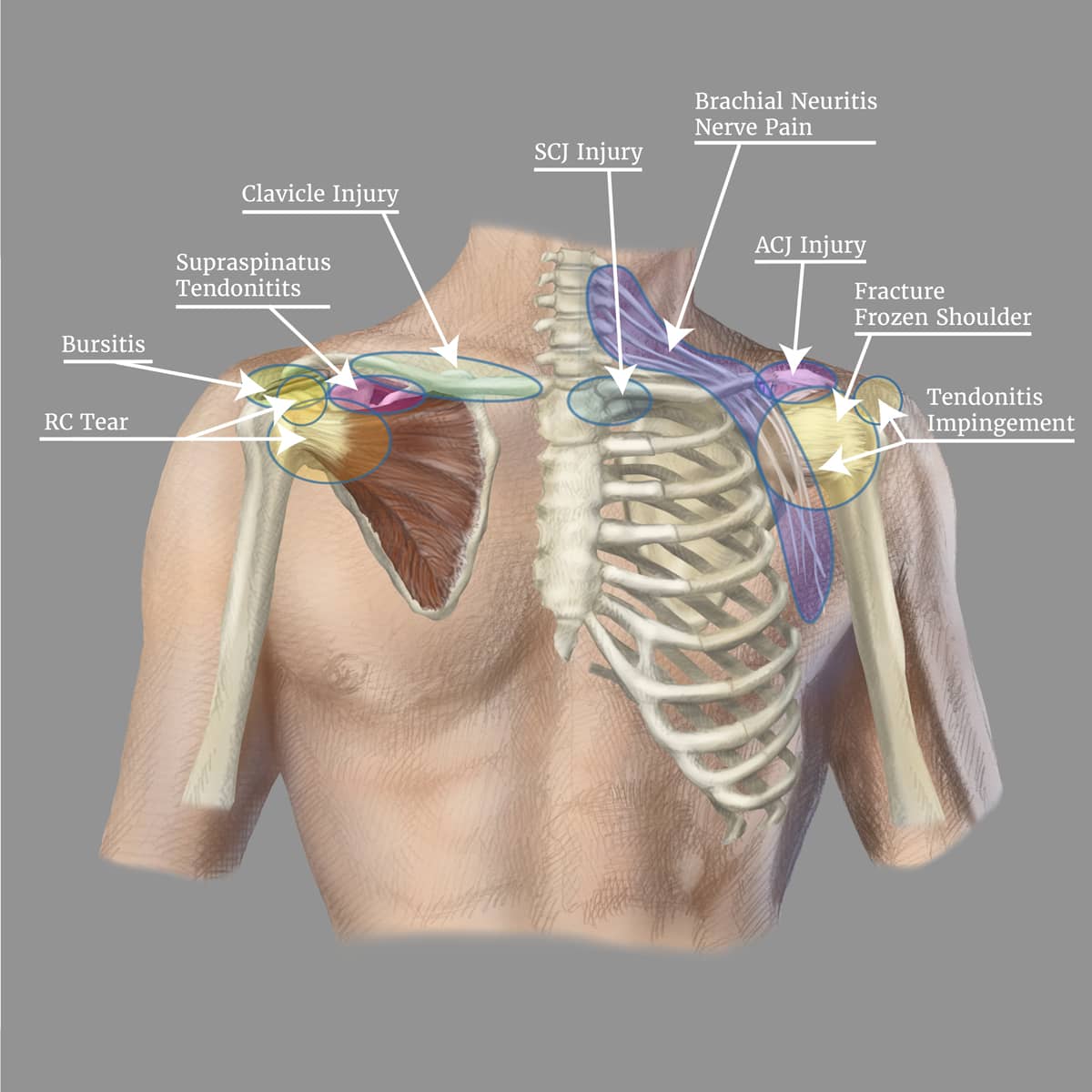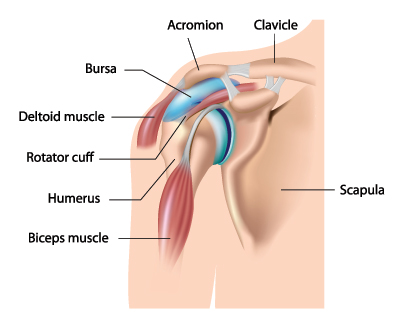When To Have Shoulder Surgery
Shoulder pain is common. Shoulder injuries are common. Which of them needs surgery and when?

Other than displaced fractures, there are very few shoulder surgical emergencies. This is fortunate, as recovering from shoulder surgery is often harder than recovering from knee or hip surgery. Though avoiding the injuries that require surgery is ideal, successfully treating shoulder problems with non-operative methods has fortunately improved. Here are a few examples:
Shoulder Dislocations
When the shoulder dislocates, the humerus exits the glenoid cup by tearing the labrum, or gasket, that keeps the humerus in place. First-time shoulder dislocations are usually easily repairable, with very high success rates, using an outpatient arthroscopic suturing technique. The first question we ask is, “Are you playing a sport, or in a work environment where a shoulder dislocation can be a life-threatening event?” Such a situation might include kayaking, surfing, mountaineering, police or military work. If so, immediate repair is mandatory. While some relatively minor labral tears may heal on their own, most traumatic tears in athletes are treated with surgical repair.

Rotator Cuff Injuries
The rotator cuff guides the humerus through a large arc of motion. When the cuff is dysfunctional—from injury, inflammation, or tearing—the local non-injured muscles take over, creating abnormal motion and wear patterns and pain. Steroid injections were sometimes used but led to tissue weakening and increased tendon rupture rates.
An accurate diagnosis with an exam, x-ray, and MRI is a huge help in guiding therapy. Anabolic injections of PRP and lubricants of hyaluronic acid combined with a careful rehab program, have dramatically decreased our surgical intervention rate for many cuff injuries—so much so that we now inject almost all cuff injuries first and then repair the ones that don’t respond after a month or two. The reasons are that (1) The injections are potent anti-inflammatories and stimulate a repair process; (2) Pre-surgery rehab with decreased inflammation improves surgical outcomes; (3) Rotator cuff repair surgery has a worrisome failure rate that gets considerably higher with advancing age and tear size. That said, rotator cuff repair surgical techniques have improved and there is no reason to live in pain.
Shoulder Arthritis
Wearing away of the cartilage, which serves as the bearing surface of all joints, is highly problematic in the ball-and-socket shape of the shoulder joint. Often starting with an injury (but also possibly from genetic causes), these surfaces are not easily repaired with our cartilage regeneration techniques. Over time, as the surfaces wear and bone spurs form, the range of motion decreases. To diminish this, the combination of injection therapy with rehabilitation exercises to maintain motion and strength are the key to preserving the joint and getting the best outcomes from shoulder replacement surgery.
The bottom line is, don’t let the shoulder get stiff or lose range of motion. Be aggressive about this and, no matter which therapy is used, the outcome will be improved. Shoulder replacement techniques and devices have gotten better and do permit patients to return to most sports—but the results lag far behind those of the knee and hip.
AC Joint Dislocations
The clavicle and the scapular meet at the acromion, the bone at the top of the shoulder. Falls onto the shoulder—or hard hits by NFL lineman—dislocate this joint about 60,000 times per year in the U.S. alone. The reason to repair this joint is that the shoulder has lost the strut that keeps the upper arm out to its normal length. Thus, people notice both the cosmetic appearance of a prominent bump and the functional aspect of a weaker shoulder for some period of time.
Taping immediately after injury with reduction of the joint makes it feel better and may make a difference in the eventual degree of elevation of the clavicle as it gives the torn ligaments a chance to heal. Surgical repair is relatively easy; however, it is not as successful as one would hope, which is why there are over 50 different methods for AC Joint reconstruction. This is a situation where patient choice is the primary driver of surgery vs. no surgery.
The shoulder is ripe for innovation. Exploring new advances in biologic therapies and rehabilitation techniques makes sense; living with pain and dysfunction doesn’t. Life is too short, the shoulder is too important, and you only have two of them.

